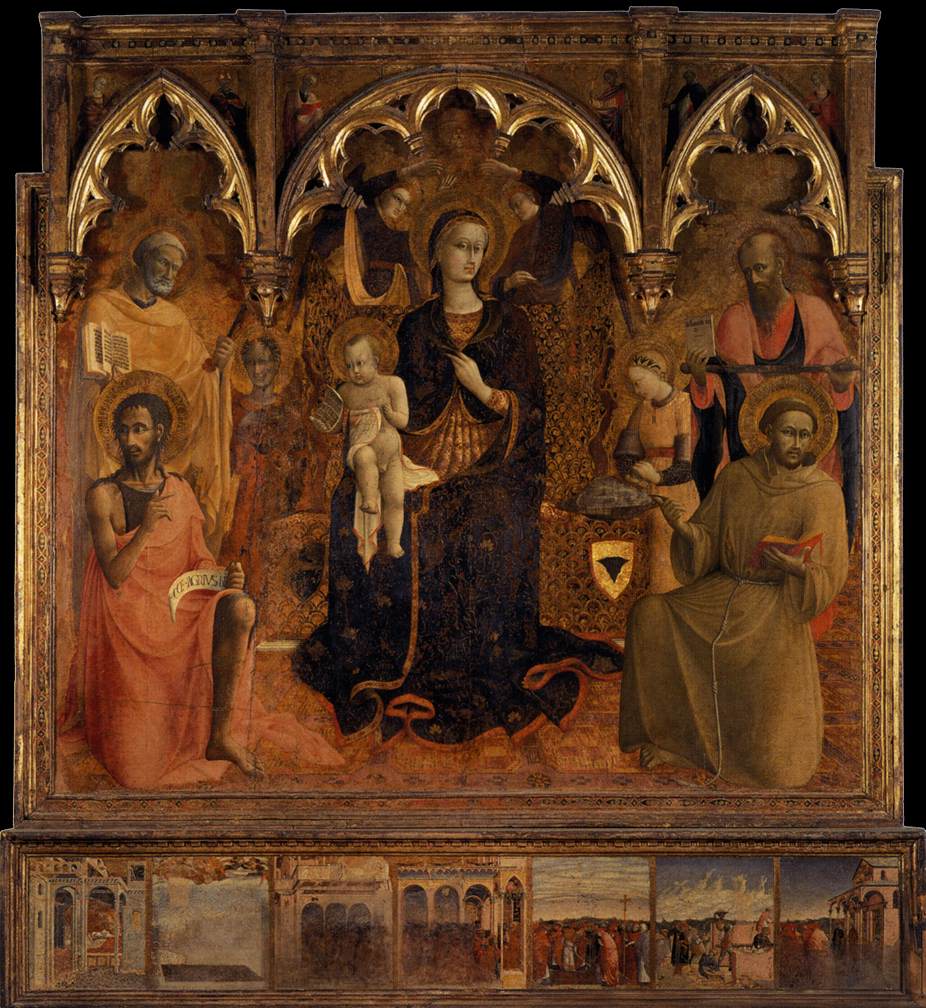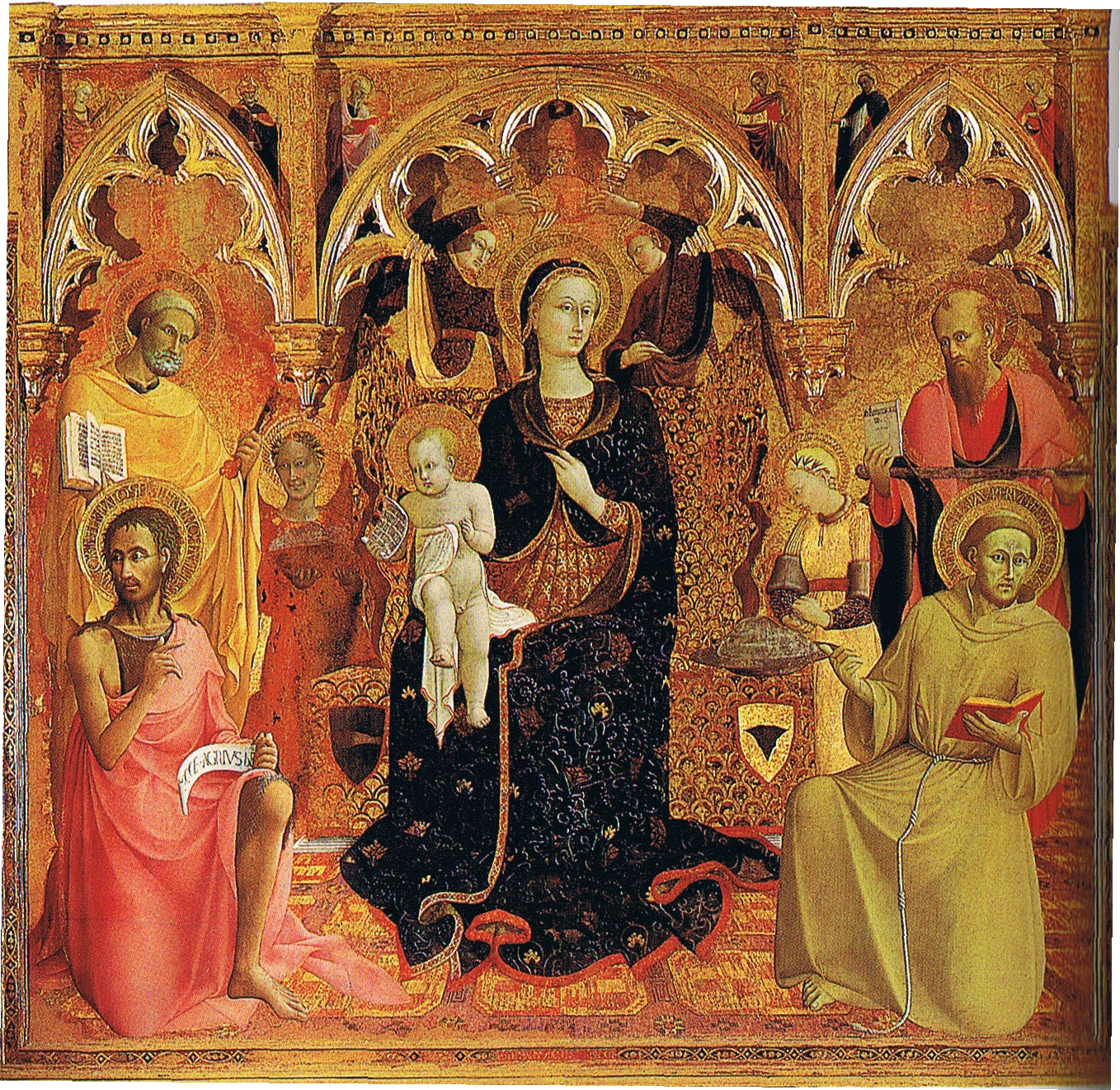
Historical
Oriental Rugs & Carpets
in Medieval European Paintings
Main Page
|
|
SASSETTA
(b. 1394, Siena, d. 1450, Siena)
The Virgin and Child with Saints
1430-32
Tempera on panel, 240 x 216 cm
Galleria degli Uffizi, Florence


This altarpiece, known from its subject as the Madonna delle
Nevi (the Madonna of the Snows) was originally commissioned for one of the
oldest and most venerable altars in the Siena cathedral. It stood immediately
left of the doorway known as the Porta del Perdono - the side entrance to the
cathedral that provided most immediate access to both the baptistery and to the
civic centre of the Palazzo Pubblico and the Campo.
Sassetta received the commission in 1430 from Ludovica Bertini, the widow of
Turino di Matteo, the man responsible for both the cathedral sacristy and the
baptismal font. According to one local chronicler, Turino had died in 1423 and
been buried in front of the Porta del Perdono. In the contract for the
altarpiece, Ludovica makes it clear that she is commissioning the work both in
memory of her husband and also in her own right as a pious Franciscan tertiary,
so the coat-of-arms of her own family as well as that of her husband appear
prominently displayed on the richly ornamented fabric covering the Virgin's
throne. Her commitment to the Franciscan Order is clearly demonstrated by the
inclusion of Saint Francis in the right foreground of the main panel of the
altarpiece. The imagery chosen for the rest of the altarpiece, however, was
entirely Sienese and civic in intention. It depicts the familiar subject of the
enthroned Virgin with the Christ Child on her lap and surrounded by angels and
saints. The altarpiece therefore echoes the imagery of two of Siena's most
revered civic icons - the front face of Duccio's high altarpiece for the
cathedral and Simone Martini's mural in the council hall of the Palazzo Pubblico.
That such an association was explicitly intended is shown by the inscription
engraved on the Virgin's halo: 'If you trust me, Siena, you will be full of
favour'.
The imagery of the altarpiece was elaborated in order to honour two of the
Virgin's titles - 'Queen of Heaven' and 'Our Lady of the Snows'. Two angels
behind the throne hold a crown over the Virgin's head. The angel on the left of
the throne, meanwhile, carries a dish filled with snow and the angel on the
right makes a snowball. The seven narrative scenes of the predella describe in
detail the legend of Our Lady of the Snows. They show how, in the reign of Pope
Liberius (352-66), the Virgin caused snow to fall miraculously in the heat of
August on the Esquiline Hill in Rome. Furthermore, the snow fell precisely in
the pattern of the ground plan of a church. The Virgin then instructed a wealthy
layman and his wife, and Pope Liberius, to build a church in her honour on this
site - a church that became Santa Maria Maggiore, one of Rome's major basilicas.